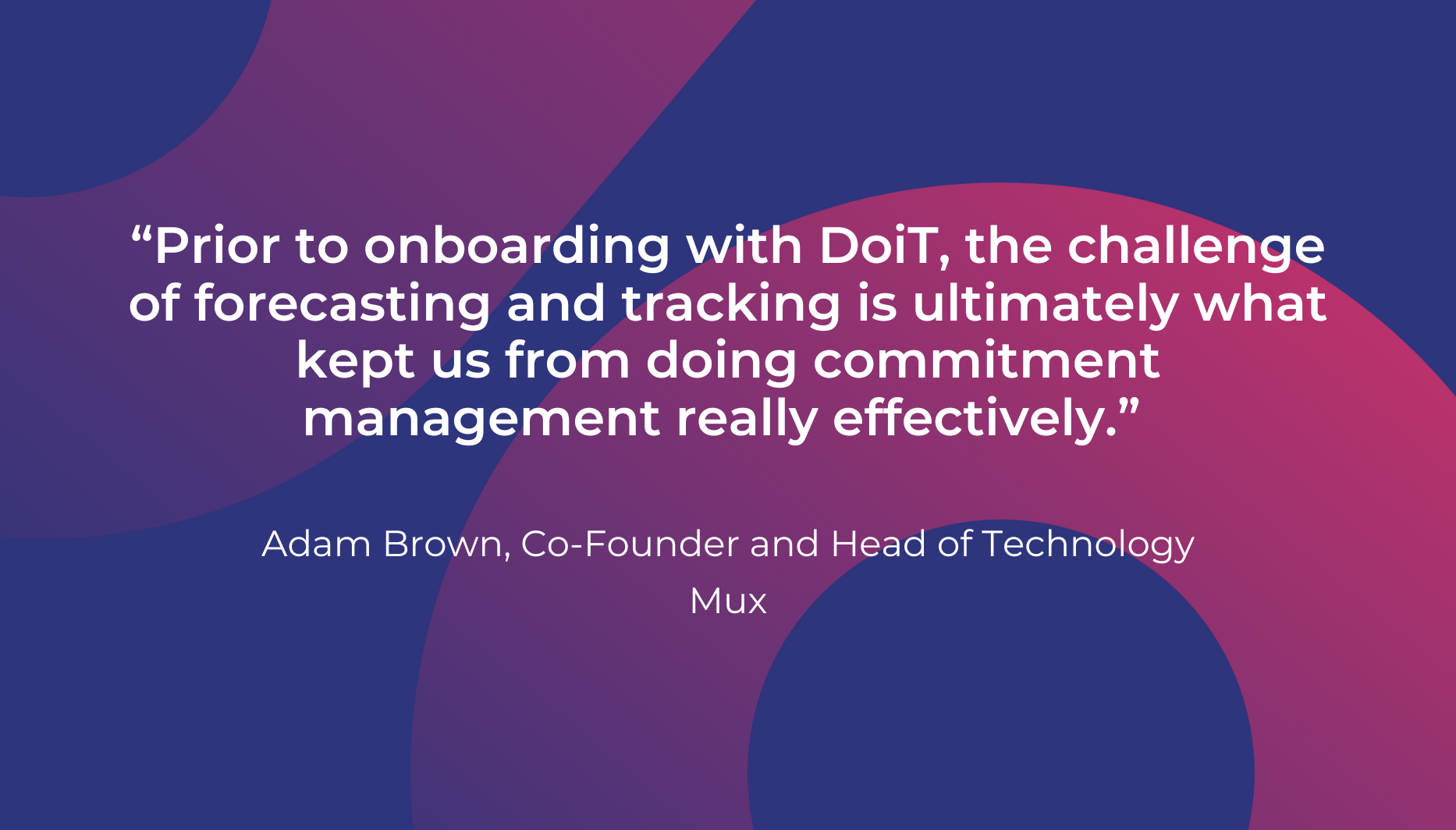How Felix Pago used DoiT Cloud Intelligence™ to reduce cloud waste and scale responsibly
Felix Pago used DoiT Cloud Intelligence™ to cut Firestore costs by 70% and align engineering with real-time, intent-aware cloud financial insights at scale.
Meet the team leading DoiT
Hear what’s new at DoiT
Unlock revenue through expert partnerships
Discover career opportunities
Award-winning partners of cloud providers


Consumers expect more and more businesses to have video in their products, and streaming platforms like Netflix and TikTok have set the expectation that those video experiences will be seamless and reliable. But video is complex to build, and even harder to scale and maintain.
Mux is video infrastructure that makes it easy for development teams to build video into their products, and do so quickly, reliably, and at global scale. This lets teams focus on what’s most important: building the things that make their business special, while Mux handles the complexity and tedium of video and analytics infrastructure. With Mux, developers can build the video experiences their audiences want, across every type of video: live, on-demand, and real-time.
A great deal of Mux’s infrastructure decisions are driven by the cost effectiveness of various services, regions, and workloads within their multicloud (AWS+Google Cloud) environment. Those decisions are largely controlled by their internal platform team, which provides a Kubernetes interface to the rest of their product engineering team, and manages how that Kubernetes layer is positioned on their different cloud providers.
Naturally, budgetary determinations play a large role in how those various teams are able to spin up and manage their workloads. Mux houses a business operations team that centralizes and analyzes their cloud cost data across the multicloud environment, which means that they need a single source of truth to ensure that they have the full view of their overall cloud spend.
However, when it came to optimizing that spend, Mux Co-Founder and Head of Technology Adam Brown needed additional assistance. The team was Reserved Instances on AWS, but struggling to manage their usage over terms of the commitments. There were occasions when the team decided to change machine types and had to go through the painful process of converting or selling the outdated reservations, or optimizing backend software and subsequently lowering their compute consumption, thus negating the need for the full capacity that they had purchased.
The time and expertise that would have been required for a fully optimized commitment strategy was too much for the growing company to manage on their own. This led to ad-hoc commitment purchases that failed to provide significant savings, while still draining the team of valuable time that could otherwise be spent improving their technology.
By working with DoiT on both their AWS and Google Cloud environments, Mux is now able to enjoy the full benefit of Savings Plan and CUD discounts, leading to significant cost savings since Q1 2022. This approach works alongside the small amount of 3-year commitments that the company still has (thus maximizing their savings) and has eliminated the need for any new commitment purchases.
“We don’t have to worry about perfectly optimizing long-term commitments or ensuring that we fully utilize those commitments.”
This has not only freed up a significant amount of time on the Mux infrastructure team since they no longer have to forecast, track, and manage multiple commitments, but also allows them to effectively optimize their environment without worrying about being overprovisioned afterwards. “We don’t have to worry about perfectly optimizing long-term commitments or ensuring that we fully utilize those commitments.”
In addition to this approach, the aggregate view and analytics provided by the DoiT Console is the primary source of information for Mux’s technology and business operations teams. “The data from DoiT is really our key entry point into cloud spend,” says Brown. “We’re using the DoiT API to ingest all of our data from both cloud providers in order to fully understand the spend across cloud providers, as well as how our new approach is applied to our workloads.”
Felix Pago used DoiT Cloud Intelligence™ to cut Firestore costs by 70% and align engineering with real-time, intent-aware cloud financial insights at scale.

Growing the reservation platform for the world’s Michelin restaurants with DoiT’s expertise. CoverManager, the go-to reservation and booking platform for the world’s foremost restaurants, partners with DoiT to control costs and maintain high server stability

How Opterrix partnered with DoiT to deliver near-instant hailstorm analysis and cut feature delivery times by half.
From cost optimization to cloud migration, machine learning and CloudOps,
we’re here to make the public cloud easy.
From cost optimization to cloud migration, machine learning and CloudOps, we’re here to make the public cloud easy.
Ready to get started?
You will receive a calendar invite to the email address provided below for a 15-minute call with one of our team members to discuss your needs.